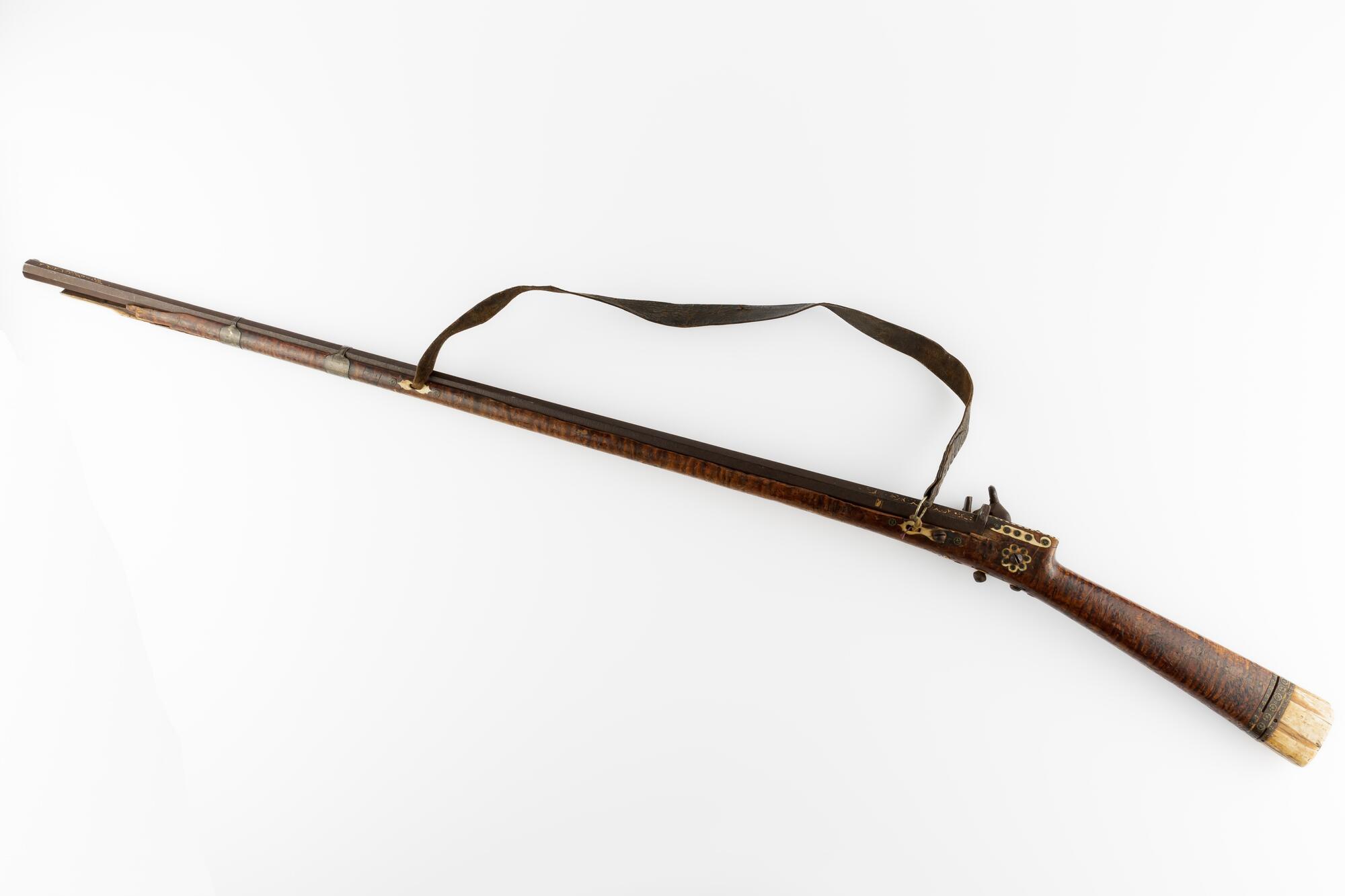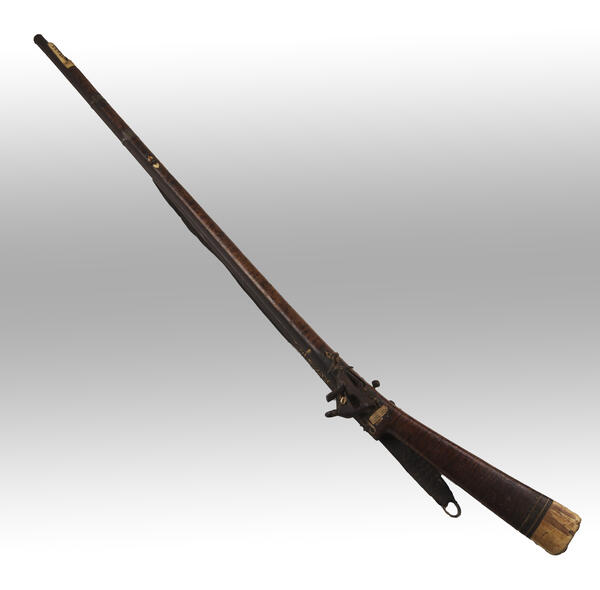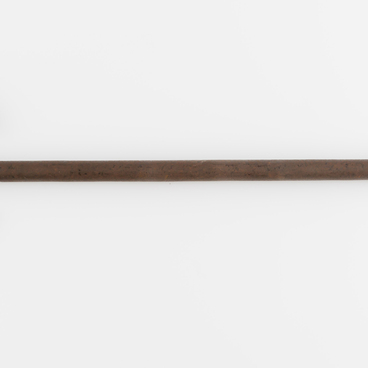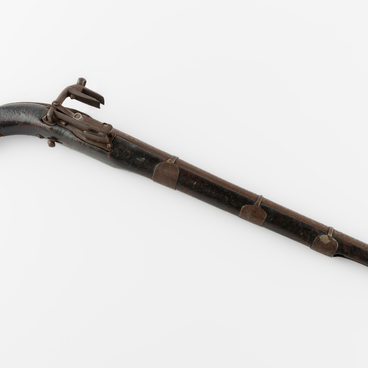Firearms began to be used in Europe in the 15th–17th centuries. The first guns were matchlocks. They were extremely inconvenient, since the charge was set on fire manually with a special rod while holding the gun with one hand. In the 18th century, these weapons were replaced by guns with flintlock mechanisms, which came to the Caucasus from the Ottoman Empire.
The museum keeps a 13-mm smoothbore muzzle-loading rifle with a Hispano-Moorish flintlock. The lock is the part of the gun responsible for igniting the charge. The term “lock” is outdated and currently applies only to historical weapons. The Hispano-Moorish flintlock is only one of the options for igniting gunpowder. It was preceded by other variants of locks. But the introduction of the Hispano-Moorish flintlock caused a certain revolution in military tactics. This system favorably differed from the previous ones by its cheapness, simplicity and reliability.
Initially, this method of igniting gunpowder came from the Arab world. At the very beginning of the 16th century it came to Spain and later spread throughout Europe — hence the name of the flintlock. Flintlock rifles came to the Caucasus through the Ottoman Empire and were successfully and widely used until the 19th century.
Due to the geographical, economic and political isolation of the Northwest and Central Caucasus, firearms appeared among the Circassians much later than in Europe and Asia, approximately in the middle of the 17th century. At the same time, the preferences of the Circassian military elite turned out to be different than those of the Europeans. For more than two centuries, their weapon of choice was the long-barreled flintlock.
Rifles, as well as edged weapons, were usually richly decorated. Circassian artisans reached a high level of this craft. The octagonal steel barrel of the gun from the exhibition is decorated with a pattern made with a gold notch. Relatively light and durable walnut wood was used to make the forearm. The ends of the forearm are decorated with ivory. Also, the holes for the belt and the trigger are decorated with ivory and brass plaques. Until 1930 the rifle was kept in the Kuban District Museum, then in the Adyghe Regional Museum of Local Lore, and only in 1971 it was transferred to the Gelendzhik Museum.
The museum keeps a 13-mm smoothbore muzzle-loading rifle with a Hispano-Moorish flintlock. The lock is the part of the gun responsible for igniting the charge. The term “lock” is outdated and currently applies only to historical weapons. The Hispano-Moorish flintlock is only one of the options for igniting gunpowder. It was preceded by other variants of locks. But the introduction of the Hispano-Moorish flintlock caused a certain revolution in military tactics. This system favorably differed from the previous ones by its cheapness, simplicity and reliability.
Initially, this method of igniting gunpowder came from the Arab world. At the very beginning of the 16th century it came to Spain and later spread throughout Europe — hence the name of the flintlock. Flintlock rifles came to the Caucasus through the Ottoman Empire and were successfully and widely used until the 19th century.
Due to the geographical, economic and political isolation of the Northwest and Central Caucasus, firearms appeared among the Circassians much later than in Europe and Asia, approximately in the middle of the 17th century. At the same time, the preferences of the Circassian military elite turned out to be different than those of the Europeans. For more than two centuries, their weapon of choice was the long-barreled flintlock.
Rifles, as well as edged weapons, were usually richly decorated. Circassian artisans reached a high level of this craft. The octagonal steel barrel of the gun from the exhibition is decorated with a pattern made with a gold notch. Relatively light and durable walnut wood was used to make the forearm. The ends of the forearm are decorated with ivory. Also, the holes for the belt and the trigger are decorated with ivory and brass plaques. Until 1930 the rifle was kept in the Kuban District Museum, then in the Adyghe Regional Museum of Local Lore, and only in 1971 it was transferred to the Gelendzhik Museum.





